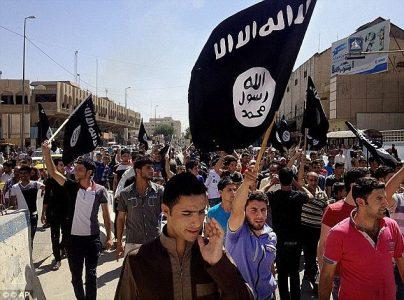
ISIS had ‘perfect’ ingredient to build huge dirty bomb in Mosul
ISIS terrorists nearly stumbled on the main ingredient for a “dirty bomb” when they overran Mosul in 2014, reports the Mail Online.
Two caches of cobalt, a metallic substance with lethally high levels of radiation, were found inside two radiotherapy machines at the University of Mosul.
Iraqi forces found the cobalt-60 machines had not been touched when they liberated the city this month.
A Health Ministry official said of ISIS: “They are not that smart.”
Western intelligence agencies were supposedly aware of the cobalt and monitored for three years for any signs ISIS might try to use it.
Cobalt is used to kill cancer cells when it is contained within the heavy shielding of a radiotherapy machine.
However, in terrorist hands, cobalt could have been used to create a “dirty bomb.”
Fears were intensified in late 2014 when ISIS claimed it had obtained radioactive material and then again last year when they seized laboratories at the same Mosul college campus with the apparent goal of building new weapons.
A November 2015 draft report found that the radioactive cores of the material, when new, “contained about nine grams of pure cobalt-60 with a potency of more than 10,000 curies — a standard measure of radioactivity.”
A person standing three feet from the unshielded core would receive a fatal dose of radiation in less than three minutes, the Washington Post reported.
US officials have requested their current location not be disclosed.
It is unclear why ISIS failed to take advantage of the cobalt stored at the Mosul college campus.
Nuclear experts suggest they may have been concerned about how to remove the machines’ thick shielding without exposing themselves to deadly radiation.
A “dirty bomb” made from cobalt could have resulted in “panic and an expensive disruptive clean-up”, David Albright, a nuclear weapons expert and former UN weapons inspector told the Washington Post.
He added: “There would likely not have been that many deaths, but the panic could have been profound, leading to the emptying of parts of the city as residents fled, fearful of the effects of radiation.”
ISIS insurgents seized control of Mosul in the summer of 2014.
The east side of the city was recaptured by Iraqi fighters in January this year, though the west side of the city took far longer.
An aerial bombardment on the west, which includes the Old City, started in February and lasted until early July.
ISIS fighters had turned the city into a fortress, holding tens of thousands of civilians as human shields.
Iraqi forces often turned to artillery and US-led coalition airstrikes. The Old City was the last battlefield.
Source: INN





